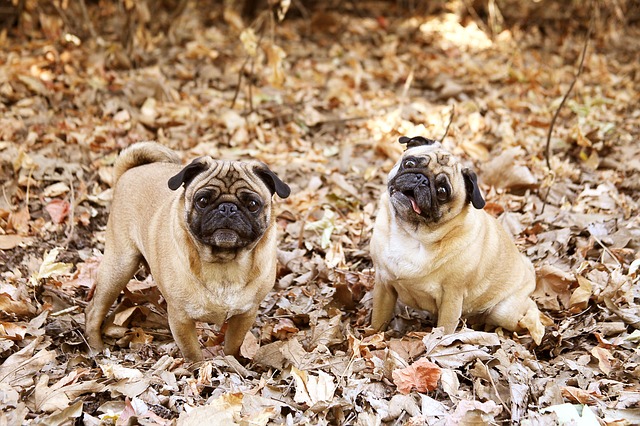Autumn’s falling leaves, moisture, and windy weather mean it’s time to deal with fall allergies. Your dog is just as susceptible to allergies as you are, and all that sniffing he’s bound to do puts him especially at risk. Sneezing, coughing, red eyes, and itchy skin are all possible side effects. Whether it’s the mold that grows under damp piles of leaves or decaying plant matter swept up by the wind, there’s a number of things your dog could be allergic to. They could end up spending fall itchy and miserable, but there are a few things you can do to help your dog fight fall allergies.

# 1 – Keep Up With Cleaning
Allergen particulates float in the air unnoticed, and when they’re in your home, they’ll settle in your carpets, blankets, and your dog’s favorite pillows. You won’t be able to see them, but your dog’s itchy skin will be more than enough proof. You can help him out by washing all the doggy and human bedding once a week. Vacuum on a regular basis and dump the vacuum bag or canister in an area where your dog won’t immediately sniff up the contents.
# 2 – Make Baths a Priority
A clean house won’t last long with a dirty dog. Regular bath time will keep your floors and furniture clean longer, but you’ll be more concerned with how it’ll help your dog. Water and doggy shampoo will remove irritating allergens trapped in fur, and it’ll also kill bacteria and yeast that cause serious skin conditions. It’s important to remember, however, that bathing your dog too often can dry out their skin. Some breeds should be bathed once a week while others only once a month. Ask your veterinarian for their suggestion.

#3 – Encourage Healthy Eating
Your dog’s diet has a lot to do with their overall health. A meal made from raw meat is best, but if you’re not ready to jump into raw feeding, choose something grain-free with human-grade protein. Artificial colors and flavors can make allergies worse. Sugar, rendered fat, and feed-grade ingredients won’t do anything positive for their health. Bite-sized pieces of veggies and fruits are great treats to help improve skin and fur.
Related: 11 Best Dog Foods for Allergies
# 4 – Maintain Outdoor Landscape
Your dog’s biggest allergy-related threat will be outside. Mold grows on moist leaves and rotting logs, and ragweed is common fall foliage. After your pup has had his fun playing in the freshly raked leaf pile, bag it up and remove it from your property. Do your best to keep him away from areas where ragweed grows, and supervise playtime to make sure he doesn’t get himself into an itchy situation. You can also prevent mold growth near your home by cleaning out the gutters and making sure they’re directing rain water away from the property.

# 5- Treat Them to Supplements
If your dog is still itching after you’ve cleaned, there are several supplements that veterinarians frequently recommend to fight allergies. Probiotics will help their gastrointestinal health which in turn will reduce allergy symptoms. One of the best natural anti-itch ingredients is omega-3 fatty acids. This substance, found in fish oil, dramatically decreases inflammation and improves organ function. For some itchy dogs, a dose of omega-3 on a daily basis is all they need to feel better.
iHeartDogs’ Allergy & Itch Relief Chews not only contain omega-3 and omega-6 fatty acids in the form of Salmon Oil, they are also packed with itch-reducing and skin-protecting ingredients such as Quercetin, Colostrum, Apple Cider Vinegar, and Colostrum.
These statements have not been evaluated by the Food and Drug Administration. This product is not intended to diagnose, treat, cure, or prevent any disease. The information on this website is not intended to replace a one-on-one relationship with a qualified healthcare professional.

 Toledo, United States.
Toledo, United States.